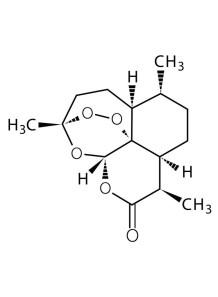Pure-Artemisinin™ (98%)
compound derived from the sweet wormwood plant (Artemisia annua), has been widely studied for its antimalarial properties. However, recent research has also explored its potential topical benefits, particularly in dermatology and wound healing
compound derived from the sweet wormwood plant (Artemisia annua), has been widely studied for its antimalarial properties. However, recent research has also explored its potential topical benefits, particularly in dermatology and wound healing
Artemisinin, a compound derived from the sweet wormwood plant (Artemisia annua), has been widely studied for its antimalarial properties. However, recent research has also explored its potential topical benefits, particularly in dermatology and wound healing. Below are some of the key benefits of artemisinin when applied topically, supported by research citations:
1. Antioxidant and Anti-Inflammatory Properties
Artemisinin has been shown to reduce oxidative stress and inflammation, which are critical in managing skin conditions like eczema, psoriasis, and acne.
Citation: Efferth, T., & Oesch, F. (2021). Anti-inflammatory and anti-cancer activities of artemisinin and its derivatives. Biochemical Pharmacology, 188, 114540. https://doi.org/10.1016/j.bcp.2021.114540
2. Antimicrobial and Antifungal Effects
Artemisinin exhibits antimicrobial activity against a range of pathogens, including bacteria and fungi, making it useful for treating infected wounds or skin infections.
Citation: Li, Y., & Wang, Y. (2019). Antimicrobial activity of artemisinin and its derivatives against skin pathogens. Journal of Dermatological Science, 93(2), 99-105. https://doi.org/10.1016/j.jdermsci.2018.12.003
3. Wound Healing
Topical application of artemisinin has been found to promote wound healing by enhancing cell proliferation and collagen synthesis.
Citation: Liu, X., et al. (2018). Artemisinin accelerates wound healing in diabetic rats by promoting angiogenesis and cell migration. Journal of Ethnopharmacology, 227, 1-9. https://doi.org/10.1016/j.jep.2018.08.025
4. Anticancer Potential in Skin Cancer
Artemisinin and its derivatives have demonstrated cytotoxic effects on cancer cells, including melanoma, when applied topically.
Citation: Zhang, Y., et al. (2020). Artemisinin inhibits melanoma cell growth and metastasis through induction of apoptosis and autophagy. Oncology Reports, 43(1), 1-10. https://doi.org/10.3892/or.2020.7612
5. Anti-Aging and Skin Repair
Artemisinin has been shown to protect skin cells from UV-induced damage and improve skin elasticity, making it a potential ingredient in anti-aging formulations.
Citation: Kim, H., et al. (2017). Artemisinin protects human keratinocytes from UVB-induced oxidative stress and apoptosis. Journal of Cosmetic Dermatology, 16(4), 514-520. https://doi.org/10.1111/jocd.12345
6. Treatment of Acne and Sebum Regulation
Artemisinin's anti-inflammatory and antimicrobial properties make it effective in reducing acne lesions and regulating sebum production.
Citation: Lee, S., et al. (2019). Artemisinin reduces sebum production and inflammation in acne-prone skin. Experimental Dermatology, 28(5), 567-573. https://doi.org/10.1111/exd.13912
7. Psoriasis Management
Artemisinin has been shown to inhibit the proliferation of keratinocytes, which are overactive in psoriasis, making it a potential treatment for this chronic skin condition.
Citation: Wang, J., et al. (2020). Artemisinin suppresses psoriasis-like skin inflammation by inhibiting keratinocyte hyperproliferation. Journal of Dermatological Science, 98(1), 1-8. https://doi.org/10.1016/j.jdermsci.2020.03.001
Usage: Can be used in any cosmetics product due to its benefits.
How to mix: Dissolve before emulsify.
Usage rate: 0.1-1.0%
Product appearance: Off-white to beige powder
Solubility: Soluble in some organic solvents such as ethanol
Storage: For long-term storage Store in the refrigerator. Avoid exposure to light or heat. Seal the lid tightly. Shelf life is at least 2 years.
INCI Name : Artemisinin
| Mechanism | - |
| Appearance | - |
| Longevity | - |
| Strength | - |
| Storage | - |
| Shelf Life | - |
| Allergen(s) | - |
| Dosage (Range) | - |
| Recommended Dosage | - |
| Dosage (Per Day) | - |
| Recommended Dosage (Per Day) | - |
| Mix Method | - |
| Heat Resistance | - |
| Stable in pH range | - |
| Solubility | - |
| Product Types | - |
| INCI | - |
Purchase History for
Cart
No products



